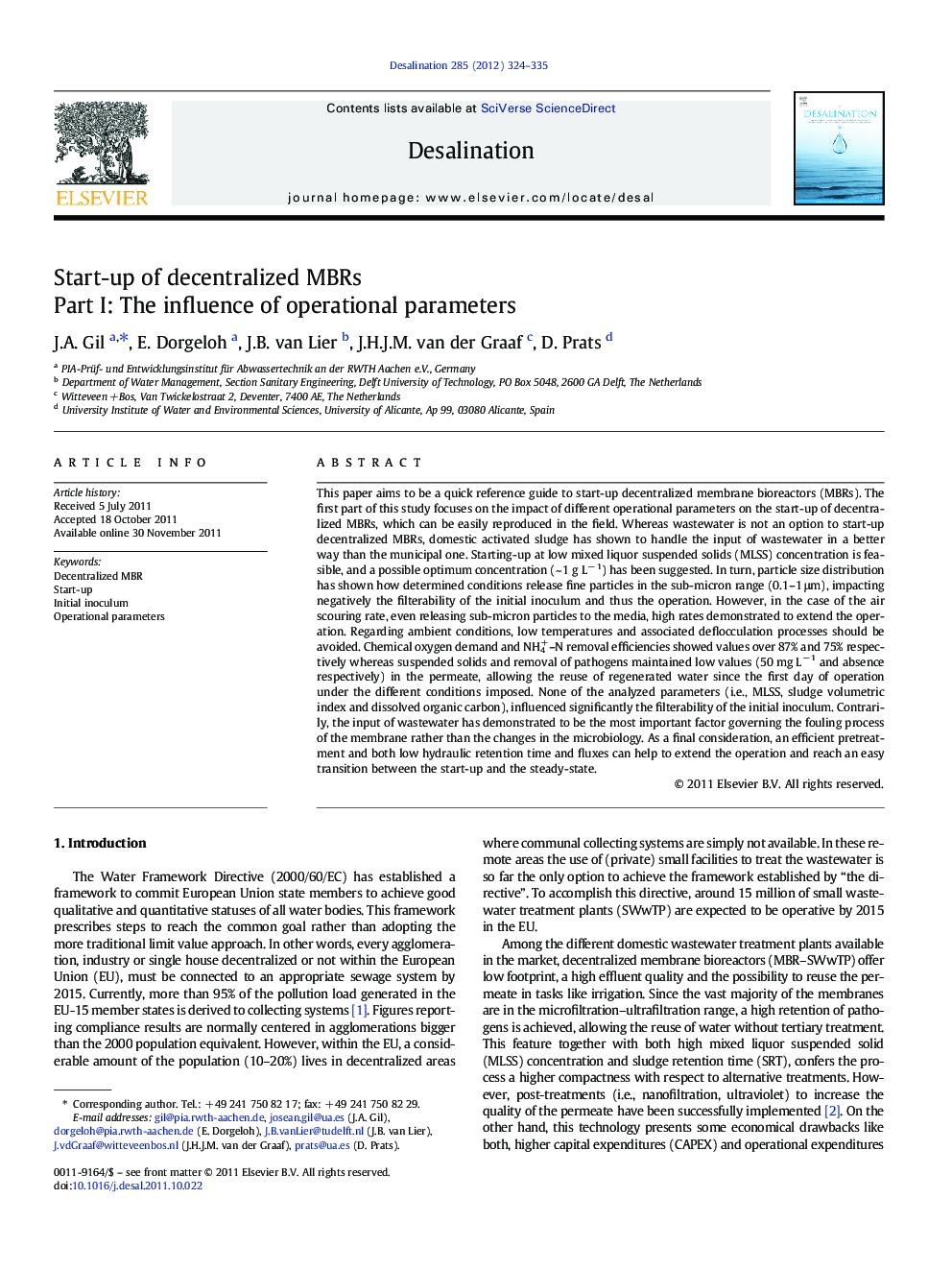| کد مقاله | کد نشریه | سال انتشار | مقاله انگلیسی | نسخه تمام متن |
|---|---|---|---|---|
| 624743 | 1455406 | 2012 | 12 صفحه PDF | دانلود رایگان |

This paper aims to be a quick reference guide to start-up decentralized membrane bioreactors (MBRs). The first part of this study focuses on the impact of different operational parameters on the start-up of decentralized MBRs, which can be easily reproduced in the field. Whereas wastewater is not an option to start-up decentralized MBRs, domestic activated sludge has shown to handle the input of wastewater in a better way than the municipal one. Starting-up at low mixed liquor suspended solids (MLSS) concentration is feasible, and a possible optimum concentration (~ 1 g L− 1) has been suggested. In turn, particle size distribution has shown how determined conditions release fine particles in the sub-micron range (0.1–1 μm), impacting negatively the filterability of the initial inoculum and thus the operation. However, in the case of the air scouring rate, even releasing sub-micron particles to the media, high rates demonstrated to extend the operation. Regarding ambient conditions, low temperatures and associated deflocculation processes should be avoided. Chemical oxygen demand and NH4+–N removal efficiencies showed values over 87% and 75% respectively whereas suspended solids and removal of pathogens maintained low values (50 mg L− 1 and absence respectively) in the permeate, allowing the reuse of regenerated water since the first day of operation under the different conditions imposed. None of the analyzed parameters (i.e., MLSS, sludge volumetric index and dissolved organic carbon), influenced significantly the filterability of the initial inoculum. Contrarily, the input of wastewater has demonstrated to be the most important factor governing the fouling process of the membrane rather than the changes in the microbiology. As a final consideration, an efficient pretreatment and both low hydraulic retention time and fluxes can help to extend the operation and reach an easy transition between the start-up and the steady-state.
► We analyzed the impact of operational parameters on the start-up of domestic MBRs.
► Wastewater input governs the process. Its high fouling potential excludes it to start-up.
► Startup at low MLSS concentrations is feasible, concretely at 1 g/L.
► The air scouring rate should be increased as much as possible when starting-up at low MLSS.
► Low temperatures should be avoided when starting-up domestic MBRs.
Journal: Desalination - Volume 285, 31 January 2012, Pages 324–335